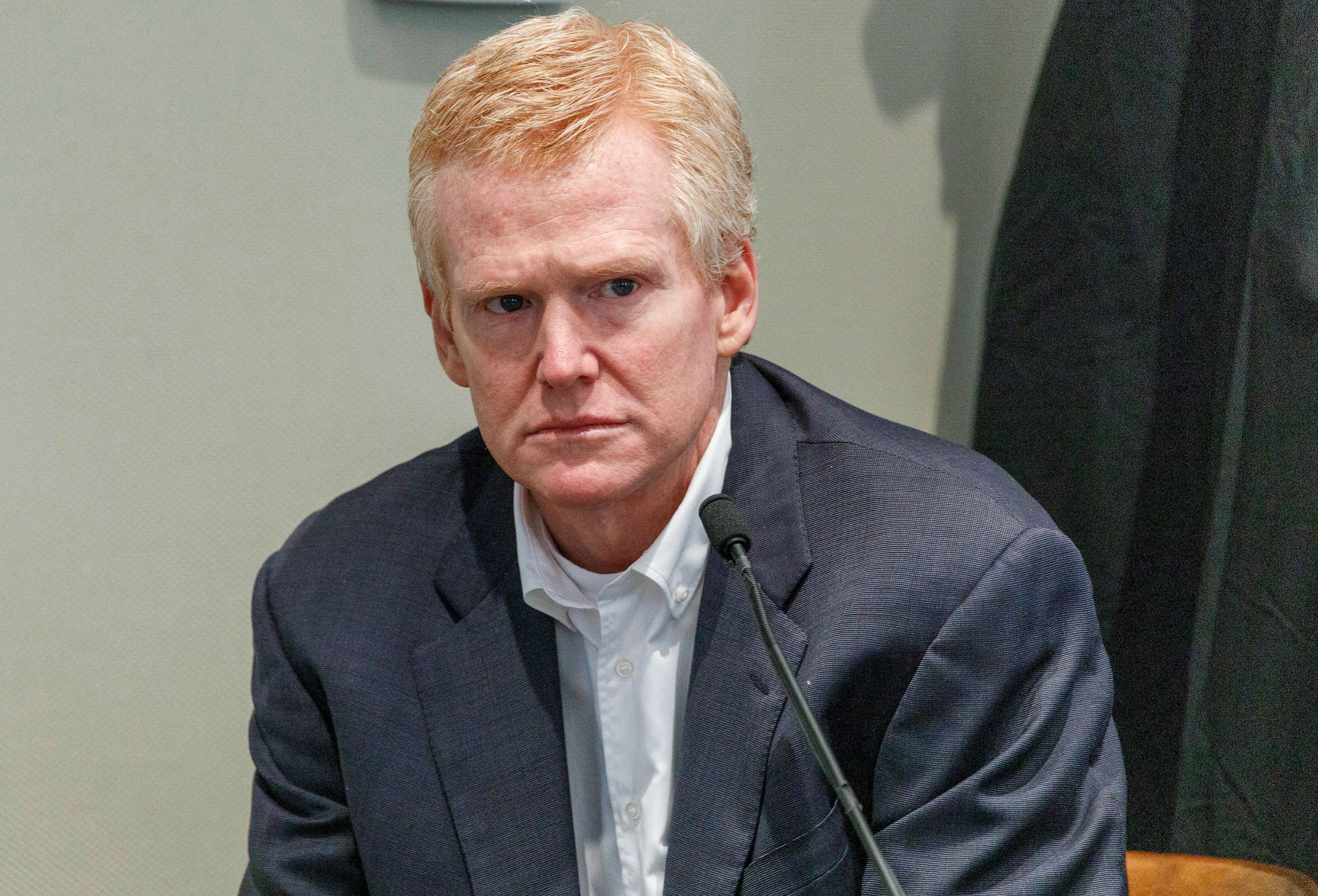Key moments from Alex Murdaugh double murder trial
After nearly three hours of deliberations, a jury reached a guilty verdict Thursday in the double murder trial Alex Murdaugh, a disgraced South Carolina attorney who was charged with the murders of his wife and younger son at their rural hunting estate in June 2021.
The bodies of Margaret Murdaugh, 52, and Paul Murdaugh, 22, were found dead from multiple gunshot wounds near the dog kennels at the family's estate in June 2021, authorities said. Alex Murdaugh, 54, who called 911 to report the discovery, was charged with their murders 13 months later.
Jurors -- and the packed gallery -- heard testimony from dozens of witnesses since the trial started on Jan. 23 in the Colleton County Courthouse in Walterboro, South Carolina.
Here's a look at five key moments from the high-profile trial.
Cellphone footage places Alex Murdaugh at kennels

Alex Murdaugh told investigators early in the case that he was not down by the kennels the night of the murders. He had said he was napping at the family house before visiting his mother, then found the bodies upon returning home.
On Feb. 1, prosecutors presented footage retrieved from Paul Murdaugh's cellphone -- including a video that showed him attempting to wrangle a dog in the kennels taken several minutes before he and his mother were believed to be killed.
In the video, two voices heard in the background were positively identified by family friends as being those of Maggie and Alex Murdaugh.
Alex Murdaugh takes the stand

Alex Murdaugh was called by his defense team to testify and took the stand for several hours on Feb. 23 and 24. During his testimony, he denied shooting his wife and son but admitted to lying to investigators about his whereabouts the night of the murders.
"I did lie to them," he said, and confirmed he was in the video by the kennels.
When asked why he lied about the last time he saw his wife and son, Murdaugh blamed his addiction to painkillers, which he said caused "paranoid thinking."
He also admitted to stealing money from several clients, as he faces about 100 other charges for allegations ranging from money laundering to staging his own death so his surviving son could cash in on his $10 million life insurance policy.
"I did a lot of damage, I wreaked a lot of havoc, there's no question," Alex Murdaugh said.
Defense witness offers two-shooter theory

On Feb. 27, the defense presented two witnesses who refuted some of the state's assertions of how the shootings took place.
Forensic pathologist Jonathan Eisenstat testified that Paul Murdaugh's fatal shot to the head was delivered downward, not upward, as pathologist Dr. Ellen Reimer, who performed autopsies on the bodies of the victims, previously testified for the state.
Eisenstat described it as a contact-range shotgun to the head.
Crime scene expert Tim Palmbach also testified that he believed Paul Murdaugh was shot in the head from above as he was doubled over from the first gunshot wound.
Palmbach said the brutality of both shootings likely left the shooter splattered with blood and matter and possibly injured -- and that two people likely committed the killings.
"It's structurally difficult for the same shooter to have two long [firearms] and no practical reason for that to happen," he said.
Prosecution witness refutes defense shooting analysis

Crime scene analyst Kenneth Kinsey took to the stand twice during the trial for the state to give his interpretation of the shootings, on Feb. 16 and then again on Feb. 28 for a dramatic rebuttal, during which he helped act out the defense's version of events.
To demonstrate Paul Murdaugh being shot in the back of the head at point-blank range, as put forth by the defense, State Attorney General Alan Wilson walked through a courtroom doorway past Kinsey, then turned and pointed a rifle over his head as Kinsey bent over. Kinsey called it a "preposterous theory."
Kinsey and Reimer both testified that they believe the fatal shot was not a contact wound.
Jury visits Moselle

Ahead of closing arguments, the jurors traveled to the scene of the crime on March 1, after the defense successfully argued that it would be useful for the jury to visit the 1,772-acre hunting estate, named Moselle, in Islandton to get a sense of the space where the killings took place.
Jurors were able to visit the feed room at the dog kennels where Paul Murdaugh was shot, saw the shed where his mother's body was found and paid a brief visit to the Murdaugh home itself. No talking was allowed and no questions were permitted. The massive estate was somewhat overgrown in some areas in the 20 months since the murders.
ABC News' Janice McDonald contributed to this report.




